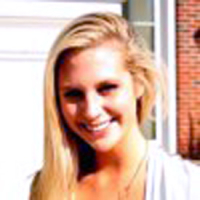Michael Landau, a bald former Yahoo! executive, didn’t really get it when his sister came to him with the idea of a blow-dry bar. “As a guy with no hair, I thought she was crazy,” he said. “I didn’t understand why a woman needed a blowout or why they would pay for it.”

The answer to his question took him a while to find—but his sister and business partner, Alli Webb, knew all along. Blow-dry bars offer a product—an experience, rather—that brings housewives, CEOs, and 10-year-olds to a place they can relax, chat, and come out feeling like a new person—all for about $40. “What we set out to do was create a place that felt nothing like a salon,” said Landau, now the chief executive officer of the booming “Drybar” chain. “It didn’t look like a salon. It didn’t feel like a salon. It didn’t smell like a salon.”
Drybar is the leading player in a burgeoning industry, which includes smaller competitors like Boston’s “Be Styled” and New York’s Haute Air and Blow. Together, they are disrupting the traditional salon industry, offering women quick, affordable doses of fabulousness and me-time.
ADVERTISEMENT
“We have been sort of on a rocket ship here in terms of our growth,” said Landau. Drybar has grown from four locations and $1.5 million in revenue in 2010 to 25 locations and $19 million in revenue in 2012. By the end of this year, Landau hopes to have close to 3,000 employees and more than $40 million in revenue. Drybar recently reached the milestone of the 1,111,111th customer; she was awarded free blowouts for life.
Drybar keeps it simple. Sure, it could earn more money per customer with chi-chi hair revival treatments, keratin, and color services. But it eschews those in favor of blowouts. In the age of “a million choices,” as Landau said, this short, fun experience wins out over the classic salon experience. “It’s like In-N-Out Burger could probably sell a lot of chicken sandwiches but they just sell burger.”
Stephanie Jones, a young recent college grad, is in the go-to demographic for these blow-dry bars. Jones took a mother and daughter trip to New York City and wanted to do something exciting and different. Though she had never had her hair blown out before Drybar, which she heard of through fashion magazines, the experience instantly came to mind—and she was lucky to get an appointment two weeks in advance. At 9 a.m. on a Sunday morning, the Drybar's midtown Manhattan location was packed with other customers—but in an environment filled with mimosa sipping, it was pretty easy to get used to. “They’ve gotten so popular that you pretty much need an appointment now,” she said. “I don’t know how many walk-ins they can take.”
Any metropolitan woman will say a blow dry for under $50 is a bargain— nowhere near the price of the $500 dry job at Harrods. All blowouts (and they mean all—no special conditions for having lots of hair) at Drybar locations are $35 ($40 in some cities). The blowouts have cutesy names fitted to the bar theme like “The Manhattan” and “Straight Up.”
Though celebrities pop up at the locations, Landau urges this isn’t only for the women living in Beverly Hills or the Upper East Side who have loads of time to have their hair styled daily. “It appeals to a much wider audience then we ever expected,” he said. “We have young teenagers to older women. It’s not just necessarily a woman who comes in at 7 a.m. before she goes to work at Goldman Sachs, although we have a lot of those. It’s also a stay-at-home mom who comes in because she feels better about herself and it makes her more confident.”
The true “tipping point” for Drybar was when women who have never had the luxury of a fabulous blowout, gave in and started coming to the salon— realizing it is affordable, fun, and that they can’t do their own hair even a margin as well as the stylists. It was a “mousetrap,” he said, for the women who were already getting blowouts daily because of the speed and environment.
There are other entrants in the field. Trippe Lonian, who developed Pinkberry yogurt outlets in Boston, has also jumped onto the blow-dry bar bandwagon. His firm, Be Styled, a salon that offers blowouts, has an outlet in Chestnut Hill, outside Boston, and plans to open two more in the Boston suburbs this summer. Lonian said suburban locations can work as well “as long as you find that sort of density of retail and you tap into the preexisting pathways that people have.”
Nick Penna, creative director for Be Styled, said the approach is to focus on the blow dry—with a bit of added value in pastries, TV screen, and champagne. Penna was also impressed with the wide range of ages and economic backgrounds of the customers, who sit at a bar—fiddling with iPads filled with magazine issues that allow them to communicate with their stylist or sit back and watch a movie.
Drybar’s Landau said he’s been shocked by how well received the company has been in every market in which it has opened—from San Diego to Washington D.C. to New York. He himself thought it would be just a “New York and L.A. thing.” Drybar will soon have a home in Chicago, Boston, Houston, and possibly in Miami and Las Vegas, by the end of the year. Drybar also has its own line of products, now sold in about 70 Sephora stores nationwide—from shampoo and styling creams to curling irons and flat irons developed by Webb and former Laura Mercier CEO Janet Gurwitch.






